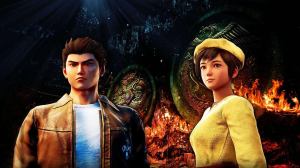Over two decades ago, SEGA released a unique title that pushed the boundaries of storytelling and immersion. This title launched on the Dreamcast and delivered a living, breathing world with cinematic storytelling, real-time environments, and a sprawling martial arts journey. It captured the imagination of fans and left them wanting more. While the ambitious series did receive more games, its troubled schedule left fans unsatisfied. Many feared it would remain unfinished, and it became infamous in the gaming industry. While it was widely praised, this infamy left a stain on its legacy and ultimately detracted from how fans and outsiders viewed it.
Videos by ComicBook.com
On September 6th, 2001, Shenmue II was released, following up on the acclaimed Shenmue. While the sequel came a mere two years after the first game, fans wouldn’t see Shenmue III until 2019. The second entry was meant to be the continuation of an epic narrative, but instead became known as one of the biggest cliffhangers in gaming. Shenmue II’s ending haunted fans, leaving them yearning for a conclusion for years.
How Shenmue 2’s Story Ended, and Set Up Shenmue 3

Shenmue II continued the story of Ryo Hazuki, a young martial artist seeking to avenge his father’s death. Players were first introduced to the narrative and gameplay in the first game, including the mysterious antagonist Lan Di. The sequel greatly expanded the series drama, adding new environments, new allies, and a deeper mythology.
The story follows Ryo’s journey to China in search of Lan Di. He discovers that Lan Di believes his father is responsible for killing Lan Di’s own father, and that there is a deeper connection between the Phoenix and Dragon Mirrors. At the end of the game, Ryo meets and rescues Shenhua Ling, whose family is connected to the mirrors’ legacy. The pair learn that Ling’s father is missing, but they uncover a cryptic note and a sword. Upon being combined, the sword and Phoenix Mirror unveil a large mural, and this is where the game ends.
The narrative ending has huge implications for Ryo’s quest and Ling’s involvement, but the long wait between Shenmue II and Shenmue III turned this into a massive cliffhanger. It should have set up a dramatic conclusion, but left fans with more unanswered questions at the height of anticipation. Series creator Yu Suzuki revealed his plans for an epic spanning several games, but fans had to wait 18 years for a follow-up, and the rest of the series is left in uncertainty.
Shenmue 2 Developed a Strong Following Despite Being a Commercial Failure

Shenmue II built upon its predecessor’s revolutionary foundation in nearly every way. It enhanced the level of detail and interactivity that was ahead of its time. Players could wander through bustling city streets, speak with almost every NPC, and enjoy a variety of activities outside the main story. This level of immersion was joined by a real-time day-night cycle and weather system to make the game feel alive.
However, despite its innovations, Shenmue II failed commercially. It first launched on the Dreamcast but was later ported to the Xbox to reach a wider audience. Despite this new port, it had missed its window by this point, leaving it considered a financial disappointment. The massive development costs, not only on Dreamcast but on Xbox, only amplified this perception of failure.
Shenmue 3 Finally Happened…18 Years Later

For years, an ending to the series seemed out of reach. However, Yu Suzuki never abandoned Shenmue. In 2015, the creator announced a Kickstarter campaign to revive the series and create Shenmue III. The reveal was met with applause and disbelief, as fans had given up hope of ever seeing the story continue.
Shenmue III’s crowdfunding was massively successful, proving the demand for the series continuation and leading to the creation of YS Net, led by Suzuki. Suzuki and his studio would spend four years, finally releasing Shenmue III after nearly two decades. At last, fans’ hopes had been answered. Learning the end of Ryo’s story and seeing his victory over Lan Di was approaching.
But this isn’t how Shenmue III played out. Rather than providing a conclusion to the series, the story only saw advancement. A confrontation between Lan Di and Ryo arrived, but it left many disappointed. More details in the plot were revealed, but again, this left more questions than answers. New characters further expanded the narrative, but some felt this was to its detriment and would make concluding them all difficult.
For many, Shenmue III was bittersweet. Fans finally got a continuation of the story, but not an ending as was hoped. The series stands as both a triumph and a tragedy, showing the highs of gaming but also the risks. The endurance of fan passion is evident, but now the same question remains that they faced for 18 years. At this point, fans just want an ending, not more story.
Suzuki has stated his vision exists beyond three games, ideally five or six, and is in the planning phase. But does the series have what it takes to go that long? Only time will tell, but there is no guarantee Shenmue IV and Shenmue V will ever exist. If they do, fans could be in for a long wait.









